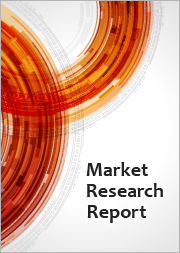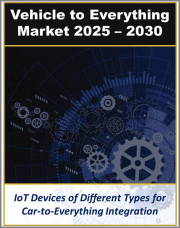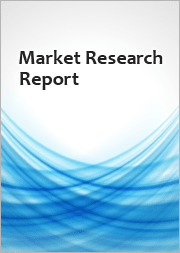
|
시장보고서
상품코드
1587600
세계의 자동차용 V2X 시장 : 제공 제품별, 커넥티비티별, 통신별, 용도별, 최종 사용자별, 지역별 분석 및 예측(-2030년)Automotive V2X Market Forecasts to 2030 - Global Analysis By Offering, Connectivity (Dedicated Short-Range Communications and Cellular Vehicle-to-Everything ), Communication, Application, End User and By Geography |
||||||
Stratistics MRC에 따르면 세계 자동차용 V2X 시장은 2024년에 8억 5,000만 달러를 차지할 전망이고, 예측 기간 중 복합 연간 성장률(CAGR)은 52.7%를 나타낼 전망이며, 2030년에는 98억 7,000만 달러에 이를 것으로 예측되고 있습니다.
자동차용 V2X(Vehicle-to-Everything)는 자동차가 다른 차량(V2V), 인프라(V2I), 보행자(V2P), 네트워크(V2N)를 포함한 환경의 다양한 요소와 상호작용할 수 있음 하는 통신 기술입니다. 이 기술은 실시간 데이터 교환을 용이하게 하고 교통 안전 향상, 교통 효율 개선, 스마트 교통 시스템 개발을 지원합니다. 고급 통신 프로토콜을 활용함으로써 V2X는 사고를 줄이고 교통 흐름을 최적화하고 자율 주행 기능을 실현하며 보다 연결된 지능형 교통 생태계에 기여하는 것을 목표로 하고 있습니다.
McKinsey의 조사에 따르면 커넥티비티, V2I/V2X(Vehicle-to-Infrastructure, Vehicle-to-Everything) 통신 솔루션은 2020년에 약 180억 달러의 지출을 전망하고 있습니다.
도시화와 교통 정체
도시 인구가 증가함에 따라 도시는 교통 과제 증가에 직면하여 통근 시간의 장기화, 사고 증가, 배기 가스 증가로 이어집니다. V2X 기술은 차량과 인프라 간의 실시간 통신을 가능하게 함으로써 이러한 문제를 해결하고 더 나은 교통 관리, 최적화된 라우팅 및 안전성 향상을 촉진합니다. 이 기술은 촉진요인의 상황 인식을 높이고, 정체를 완화하며 지속 가능한 모빌리티 솔루션을 촉진합니다. 그 결과 도시 계획자와 정부는 더욱 스마트하고 안전하며 효율적인 도시 교통 네트워크를 구축하기 위해 V2X 시스템에 대한 투자를 늘리고 있습니다.
표준화 부족
자동차용 V2X의 표준화 부족은 자동차 제조업체, 기술 공급자 및 정부 기관과 같은 여러 이해 관계자가 참여하고 각기 다른 우선 순위와 기술을 가지고 있기 때문입니다. 이 분할은 통신 프로토콜, 데이터 형식 및 보안 대책을 다양화하고 시스템 간의 상호 운용성을 복잡하게 만듭니다. 결과적으로 다른 제조업체의 차량이 효과적으로 통신하지 못할 수 있으며 V2X 용도의 가능성을 충분히 발휘할 수 없습니다. 이러한 불확실성은 투자를 억제하고 시장 도입을 방해합니다.
통신 기술의 진보
5G 및 전용 단거리 통신과 같은 통신 기술의 발전은 초저지연, 높은 데이터 전송 속도, 견고한 연결을 가능하게 하며 차량, 인프라 및 보행자 간의 실시간 통신을 촉진합니다. 통신 기능의 강화는 충돌 회피나 교통 관리 등의 안전 용도의 유효성을 향상시켜, 제조업체에 의한 채용 확대로 이어집니다. 또한 이러한 기술이 진화함에 따라 자율주행 차량의 고급 기능 통합을 지원하고 V2X 솔루션 수요를 촉진하며 스마트 교통 시스템의 미래를 형성합니다.
높은 구현 비용
자동차용 V2X 시장의 도입 비용이 높은 것은 스마트 신호기, 통신 네트워크, 차량 개조 등의 고급 인프라에 많은 투자가 필요하기 때문입니다. 통합 프로세스와 지속적인 유지 보수 비용이 듭니다. 이러한 경제적 장벽은 제조업체와 지자체가 V2X 솔루션의 채택을 망설이고 시장 성장을 제한하는 요인입니다.
COVID-19의 영향
COVID-19의 유행은 공급망을 혼란시키고 차량 생산을 지연시키고 커넥티드카 기술의 전개를 지연시킴으로써 자동차용 V2X 시장에 큰 영향을 주었습니다. 가운데 신차 수요는 감소했습니다. 또한 원격 근무과 온라인 서비스가 증가함에 따라 디지털 솔루션과 스마트 교통 시스템에 대한 관심을 가속화했습니다. 교통관리가 강화될 것으로 예상됩니다.
예측기간 중 안전, 보안 부문가 최대가 될 전망
안전, 보안 부문은 예측 기간을 통해 최대 시장 점유율을 확보할 것으로 예측됩니다., 교통 안전을 강화합니다.이 기술은 충돌 회피, 위험 경고, 긴급 차량 통지 등의 기능을 촉진하고, 사고 위험을 크게 줄일 수 있습니다. 공유함으로써 V2X 시스템은 촉진요인의 상황인식을 향상시킵니다.
예측 기간 동안 승용차 부문의 복합 연간 성장률(CAGR)이 가장 높을 것으로 예상됩니다.
승용차 부문은 운전 경험과 안전성 향상으로 예측 기간 동안 가장 높은 복합 연간 성장률(CAGR)을 나타낼 것으로 예상됩니다. 능을 서포트해, 전체적인 교통의 흐름을 개선해, 정체를 완화합니다.승용차의 V2X 기술 탑재가 진행됨에 따라, 스마트 시티나 자율 주행의 발전에 공헌해, 모빌리티의 미래를 형성합니다.
최대 점유율을 차지하는 지역 :
아시아태평양은 자동차의 전동화의 진전, 도시화, 스마트 교통을 추진하는 정부의 대처에 견인되어 예측 기간 중에 최대 시장 점유율을 기록할 것으로 예상됩니다. 연결 인프라와 지능형 교통 시스템에 투자하여 V2X 기술의 채택을 이끌고 있습니다. 또한 자동차 제조업체와 기술 기업의 협력 체제가 혁신을 촉진하고이 지역의 전반적인 이동성과 효율성을 향상시킵니다.
복합 연간 성장률(CAGR)이 가장 높은 지역 :
북미는 커넥티드 차량 기술의 진전과 정부의 지원책에 의해 예측기간 중에 가장 높은 복합 연간 성장률(CAGR)을 나타낼 것으로 예측됩니다. 이 지역에는 Qualcomm Technologies, General Motors(GM), Denso Corporation, Audi AG 등, 많은 대기업이 진출하고 있습니다.또한, 대기업 자동차 제조업체는 연구 개발에 다액의 투자를 실시하고 있어 이것이 이 지역 시장 성장을 가속시키고 있습니다.
무료 커스터마이즈 서비스 :
이 보고서를 구독하는 고객은 다음 무료 맞춤설정 옵션 중 하나를 사용할 수 있습니다.
- 기업 프로파일
- 추가 시장 기업의 종합적 프로파일링(3개사까지)
- 주요 기업의 SWOT 분석(3개사까지)
- 지역 세분화
- 고객의 관심에 응한 주요국 시장 추계, 예측, 복합 연간 성장률(CAGR)(주: 타당성 확인에 따름)
- 경쟁 벤치마킹
- 제품 포트폴리오, 지리적 존재, 전략적 제휴에 기반한 주요 기업 벤치마킹
목차
제1장 주요 요약
제2장 서문
- 개요
- 이해관계자
- 조사 범위
- 조사 방법
- 데이터 마이닝
- 데이터 분석
- 데이터 검증
- 조사 접근
- 조사 정보원
- 1차 조사 정보원
- 2차 조사 정보원
- 전제조건
제3장 시장 동향 분석
- 성장 촉진요인
- 억제요인
- 기회
- 위협
- 용도 분석
- 최종 사용자 분석
- 신흥 시장
- COVID-19의 영향
제4장 Porter's Five Forces 분석
- 공급기업의 협상력
- 구매자의 협상력
- 대체품의 위협
- 신규 진입업자의 위협
- 경쟁 기업간 경쟁 관계
제5장 세계 자동차용 V2X 시장 : 제공 제품별
- 하드웨어
- 차재 유닛(OBU)
- 도로측 유닛(RSU)
- 통신 모듈
- 센서
- 소프트웨어
- V2X 통신 프로토콜 소프트웨어
- 데이터 분석 플랫폼
- 차량 관리 소프트웨어
- 서비스
- 통합서비스
- 컨설팅 서비스
- 유지보수 및 지원 서비스
제6장 세계 자동차용 V2X 시장 : 커넥티비티별
- 전용 단거리 통신(DSRC)
- 셀룰러 차량간 통신(C-V2X)
제7장 세계 자동차용 V2X 시장 : 통신별
- 차차간 통신(V2V)
- 차량 대 인프라(V2I)
- 차량 대 보행자(V2P)
- 차량에서 클라우드로(V2C)
제8장 세계 자동차용 V2X 시장 : 용도별
- 교통관리
- 안전과 보안
- 인포테인먼트 서비스
- 자율주행 지원
- 기타 용도
제9장 세계 자동차용 V2X 시장 : 최종 사용자별
- 승용차
- 상용차
- 대중교통기관
제10장 세계 자동차용 V2X 시장 : 지역별
- 북미
- 미국
- 캐나다
- 멕시코
- 유럽
- 독일
- 영국
- 이탈리아
- 프랑스
- 스페인
- 기타 유럽
- 아시아태평양
- 일본
- 중국
- 인도
- 호주
- 뉴질랜드
- 한국
- 기타 아시아태평양
- 남미
- 아르헨티나
- 브라질
- 칠레
- 기타 남미
- 중동 및 아프리카
- 사우디아라비아
- 아랍에미리트(UAE)
- 카타르
- 남아프리카
- 기타 중동 및 아프리카
제11장 주요 발전
- 계약/파트너십/협업/합작투자(JV)
- 인수와 합병
- 신제품 발매
- 사업 확대
- 기타 주요 전략
제12장 기업 프로파일링
- Qualcomm
- Cisco Systems
- NXP Semiconductors
- Intel Corporation
- Ericsson
- Cohda Wireless
- Autotalks
- Volkswagen
- Stellantis
- Infineon Technologies
- Siemens
- Panasonic
- Huawei
- TomTom
- HERE Technologies
- Valeo
- Bosch
- Continental AG
- Toyota
- Ford Motor Company
According to Stratistics MRC, the Global Automotive V2X Market is accounted for $0.85 billion in 2024 and is expected to reach $9.87 billion by 2030 growing at a CAGR of 52.7% during the forecast period. Automotive V2X (Vehicle-to-Everything) refers to a communication technology that enables vehicles to interact with various elements in their environment, including other vehicles (V2V), infrastructure (V2I), pedestrians (V2P), and networks (V2N). This technology facilitates real-time data exchange to enhance road safety, improve traffic efficiency, and support the development of smart transportation systems. By leveraging advanced communication protocols, V2X aims to reduce accidents, optimize traffic flow, and enable autonomous driving features, contributing to a more connected and intelligent transportation ecosystem.
According to a study conducted by McKinsey, connectivity, vehicle-to-infrastructure, and vehicle-to-everything (V2I/V2X) communication solutions attracted approximately USD 18 billion in spending in 2020.
Market Dynamics:
Driver:
Urbanization and traffic congestion
As urban populations rise, cities face heightened traffic challenges, leading to longer commutes, increased accidents, and greater emissions. V2X technology addresses these issues by enabling real-time communication between vehicles and infrastructure, facilitating better traffic management, optimized routing, and improved safety. This technology enhances situational awareness for drivers, reduces congestion, and promotes sustainable mobility solutions. Consequently, urban planners and governments are increasingly investing in V2X systems to create smarter, safer, and more efficient urban transportation networks.
Restraint:
Lack of standardization
The lack of standardization in Automotive V2X arises from the involvement of multiple stakeholders, including automakers, technology providers, and government agencies, each with differing priorities and technologies. This fragmentation leads to varying communication protocols, data formats, and security measures, complicating interoperability among systems. As a result, vehicles from different manufacturers may not effectively communicate, hindering the full potential of V2X applications. This uncertainty deters investment and impedes the market adoption.
Opportunity:
Advancements in communication technologies
Advancements in communication technologies, such as 5G and dedicated short-range communications, enable ultra-low latency, high data transfer rates, and robust connectivity, facilitating real-time communication between vehicles, infrastructure, and pedestrians. Enhanced communication capabilities improve the effectiveness of safety applications, such as collision avoidance and traffic management, leading to increased adoption by manufacturers. Furthermore, as these technologies evolve, they support the integration of advanced features in autonomous vehicles, driving the demand for V2X solutions and shaping the future of smart transportation systems.
Threat:
High implementation costs
High implementation costs in the automotive V2X market stem from the significant investments required for advanced infrastructure, such as smart traffic signals, communication networks, and vehicle retrofitting. Additionally, developing and deploying V2X technology involves complex integration processes and ongoing maintenance expenses. These financial barriers can deter manufacturers and municipalities from adopting V2X solutions, limiting market growth.
Covid-19 Impact
The covid-19 pandemic significantly impacted the automotive V2X market by disrupting supply chains, delaying vehicle production, and slowing the rollout of connected vehicle technologies. With reduced mobility and a focus on health and safety, demand for new vehicles decreased. However, the crisis also accelerated interest in digital solutions and smart transportation systems, as remote work and online services grew. As economies recover, the push for V2X technologies is expected to increase, enhancing road safety and traffic management in future urban environments.
The safety and security segment is expected to be the largest during the forecast period
The safety and security segment is predicted to secure the largest market share throughout the forecast period. Automotive V2X in safety and security applications enhances road safety by enabling real-time communication between vehicles, infrastructure, and pedestrians. This technology facilitates features such as collision avoidance, hazard warnings, and emergency vehicle notifications, significantly reducing accident risks. By sharing critical information about traffic conditions, road hazards, and the presence of vulnerable road users, V2X systems improve situational awareness for drivers.
The passenger vehicles segment is expected to have the highest CAGR during the forecast period
The passenger vehicles segment is anticipated to witness the highest CAGR during the forecast period owing to its enhanced driving experiences and safety. This technology supports features such as traffic signal recognition, collision avoidance, and navigation assistance, improving overall traffic flow and reducing congestion. As passenger vehicles increasingly incorporate V2X technology, they contribute to the development of smart cities and autonomous driving, shaping the future of mobility.
Region with largest share:
Asia Pacific is expected to register the largest market share during the forecast period driven by rising vehicle electrification, urbanization, and government initiatives promoting smart transportation. Countries like China, Japan, and South Korea are leading in V2X technology adoption, with investments in connected infrastructure and intelligent transport systems. Further, collaborative efforts between automotive manufacturers and technology firms are fostering innovation, thereby improving overall mobility and efficiency in the region.
Region with highest CAGR:
North America is projected to witness the highest CAGR over the forecast period fuelled by advancements in connected vehicle technology and supportive government initiatives. The United States and Canada are at the forefront, implementing regulatory frameworks and infrastructure development to promote V2X communication. The region is home for many major players such as Qualcomm Technologies, General Motors (GM), Denso Corporation and Audi AG. Moreover, major automotive manufacturers are investing heavily in research and development which is accelerating the market growth in the region.
Key players in the market
Some of the key players profiled in the Automotive V2X Market include Qualcomm, Cisco Systems, NXP Semiconductors, Intel Corporation, Ericsson, Cohda Wireless, Autotalks, Volkswagen, Stellantis, Infineon Technologies, Siemens, Panasonic, Huawei, TomTom, HERE Technologies, Valeo, Bosch, Continental AG, Toyota and Ford Motor Company.
Key Developments:
In October 2023, Volkswagen has introduced bidirectional charging capabilities for its ID.4 electric vehicle. This advancement allows the ID.4 to not only charge from the grid but also to supply electricity back to the grid or home networks (V2H, or Vehicle-to-Home). This capability can play a crucial role in stabilizing the electric grid, particularly during peak usage times, by providing additional power where needed.
In April 2023, Stellantis unveiled the Ram 1500 REV, a 168-kWh battery that provides an estimated 350 miles of range. The combination of substantial range, innovative charging capabilities, and robust performance sets it apart as a compelling option for consumers looking for an electric vehicle that doesn't compromise on utility or performance.
Offerings Covered:
- Hardware
- Software
- Services
Connectivities Covered:
- Dedicated Short-Range Communications (DSRC)
- Cellular Vehicle-to-Everything (C-V2X)
Communications Covered:
- Vehicle-to-Vehicle (V2V)
- Vehicle-to-Infrastructure (V2I)
- Vehicle-to-Pedestrian (V2P)
- Vehicle-to-Cloud (V2C)
Applications Covered:
- Traffic Management
- Safety & Security
- Infotainment Services
- Autonomous Driving Support
- Other Applications
End Users Covered:
- Passenger Vehicles
- Commercial Vehicles
- Public Transportation
Regions Covered:
- North America
- US
- Canada
- Mexico
- Europe
- Germany
- UK
- Italy
- France
- Spain
- Rest of Europe
- Asia Pacific
- Japan
- China
- India
- Australia
- New Zealand
- South Korea
- Rest of Asia Pacific
- South America
- Argentina
- Brazil
- Chile
- Rest of South America
- Middle East & Africa
- Saudi Arabia
- UAE
- Qatar
- South Africa
- Rest of Middle East & Africa
What our report offers:
- Market share assessments for the regional and country-level segments
- Strategic recommendations for the new entrants
- Covers Market data for the years 2022, 2023, 2024, 2026, and 2030
- Market Trends (Drivers, Constraints, Opportunities, Threats, Challenges, Investment Opportunities, and recommendations)
- Strategic recommendations in key business segments based on the market estimations
- Competitive landscaping mapping the key common trends
- Company profiling with detailed strategies, financials, and recent developments
- Supply chain trends mapping the latest technological advancements
Free Customization Offerings:
All the customers of this report will be entitled to receive one of the following free customization options:
- Company Profiling
- Comprehensive profiling of additional market players (up to 3)
- SWOT Analysis of key players (up to 3)
- Regional Segmentation
- Market estimations, Forecasts and CAGR of any prominent country as per the client's interest (Note: Depends on feasibility check)
- Competitive Benchmarking
- Benchmarking of key players based on product portfolio, geographical presence, and strategic alliances
Table of Contents
1 Executive Summary
2 Preface
- 2.1 Abstract
- 2.2 Stake Holders
- 2.3 Research Scope
- 2.4 Research Methodology
- 2.4.1 Data Mining
- 2.4.2 Data Analysis
- 2.4.3 Data Validation
- 2.4.4 Research Approach
- 2.5 Research Sources
- 2.5.1 Primary Research Sources
- 2.5.2 Secondary Research Sources
- 2.5.3 Assumptions
3 Market Trend Analysis
- 3.1 Introduction
- 3.2 Drivers
- 3.3 Restraints
- 3.4 Opportunities
- 3.5 Threats
- 3.6 Application Analysis
- 3.7 End User Analysis
- 3.8 Emerging Markets
- 3.9 Impact of Covid-19
4 Porters Five Force Analysis
- 4.1 Bargaining power of suppliers
- 4.2 Bargaining power of buyers
- 4.3 Threat of substitutes
- 4.4 Threat of new entrants
- 4.5 Competitive rivalry
5 Global Automotive V2X Market, By Offering
- 5.1 Introduction
- 5.2 Hardware
- 5.2.1 On-Board Units (OBUs)
- 5.2.2 Roadside Units (RSUs)
- 5.2.3 Communication Modules
- 5.2.4 Sensors
- 5.3 Software
- 5.3.1 V2X Communication Protocol Software
- 5.3.2 Data Analytics Platforms
- 5.3.3 Vehicle Management Software
- 5.4 Services
- 5.4.1 Integration Services
- 5.4.2 Consulting Services
- 5.4.3 Maintenance & Support Services
6 Global Automotive V2X Market, By Connectivity
- 6.1 Introduction
- 6.2 Dedicated Short-Range Communications (DSRC)
- 6.3 Cellular Vehicle-to-Everything (C-V2X)
7 Global Automotive V2X Market, By Communication
- 7.1 Introduction
- 7.2 Vehicle-to-Vehicle (V2V)
- 7.3 Vehicle-to-Infrastructure (V2I)
- 7.4 Vehicle-to-Pedestrian (V2P)
- 7.5 Vehicle-to-Cloud (V2C)
8 Global Automotive V2X Market, By Application
- 8.1 Introduction
- 8.2 Traffic Management
- 8.3 Safety & Security
- 8.4 Infotainment Services
- 8.5 Autonomous Driving Support
- 8.6 Other Applications
9 Global Automotive V2X Market, By End User
- 9.1 Introduction
- 9.2 Passenger Vehicles
- 9.3 Commercial Vehicles
- 9.4 Public Transportation
10 Global Automotive V2X Market, By Geography
- 10.1 Introduction
- 10.2 North America
- 10.2.1 US
- 10.2.2 Canada
- 10.2.3 Mexico
- 10.3 Europe
- 10.3.1 Germany
- 10.3.2 UK
- 10.3.3 Italy
- 10.3.4 France
- 10.3.5 Spain
- 10.3.6 Rest of Europe
- 10.4 Asia Pacific
- 10.4.1 Japan
- 10.4.2 China
- 10.4.3 India
- 10.4.4 Australia
- 10.4.5 New Zealand
- 10.4.6 South Korea
- 10.4.7 Rest of Asia Pacific
- 10.5 South America
- 10.5.1 Argentina
- 10.5.2 Brazil
- 10.5.3 Chile
- 10.5.4 Rest of South America
- 10.6 Middle East & Africa
- 10.6.1 Saudi Arabia
- 10.6.2 UAE
- 10.6.3 Qatar
- 10.6.4 South Africa
- 10.6.5 Rest of Middle East & Africa
11 Key Developments
- 11.1 Agreements, Partnerships, Collaborations and Joint Ventures
- 11.2 Acquisitions & Mergers
- 11.3 New Product Launch
- 11.4 Expansions
- 11.5 Other Key Strategies
12 Company Profiling
- 12.1 Qualcomm
- 12.2 Cisco Systems
- 12.3 NXP Semiconductors
- 12.4 Intel Corporation
- 12.5 Ericsson
- 12.6 Cohda Wireless
- 12.7 Autotalks
- 12.8 Volkswagen
- 12.9 Stellantis
- 12.10 Infineon Technologies
- 12.11 Siemens
- 12.12 Panasonic
- 12.13 Huawei
- 12.14 TomTom
- 12.15 HERE Technologies
- 12.16 Valeo
- 12.17 Bosch
- 12.18 Continental AG
- 12.19 Toyota
- 12.20 Ford Motor Company



















